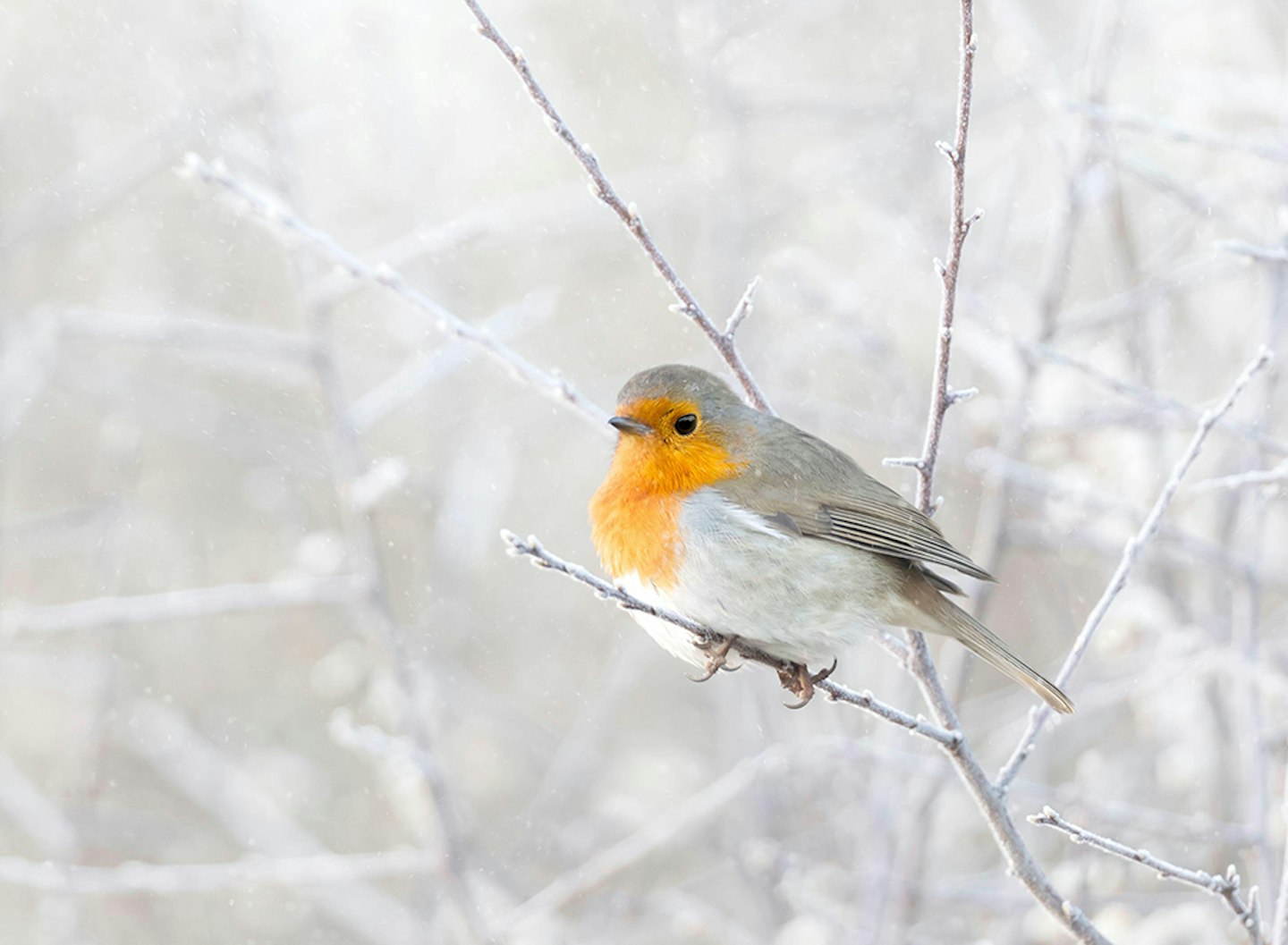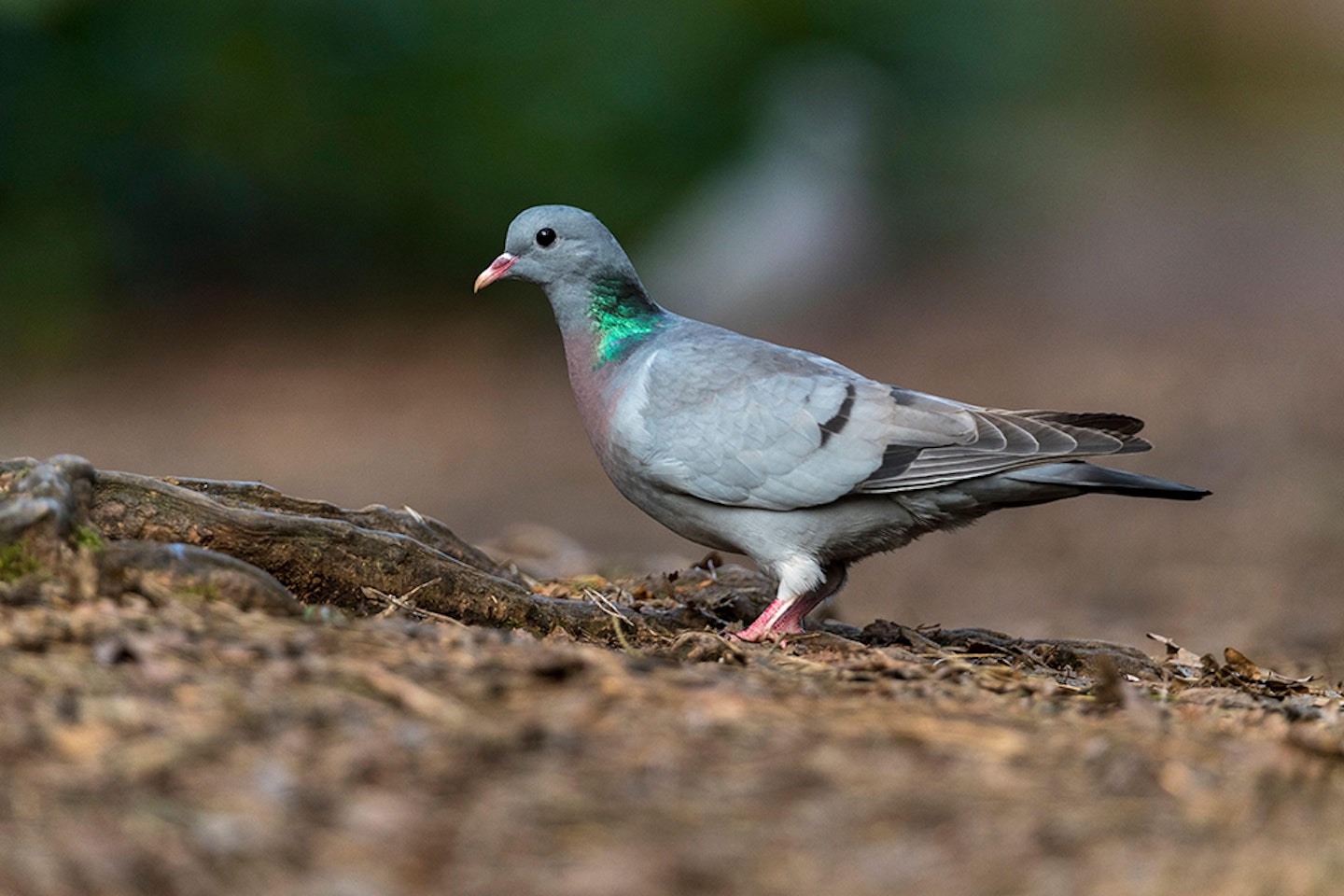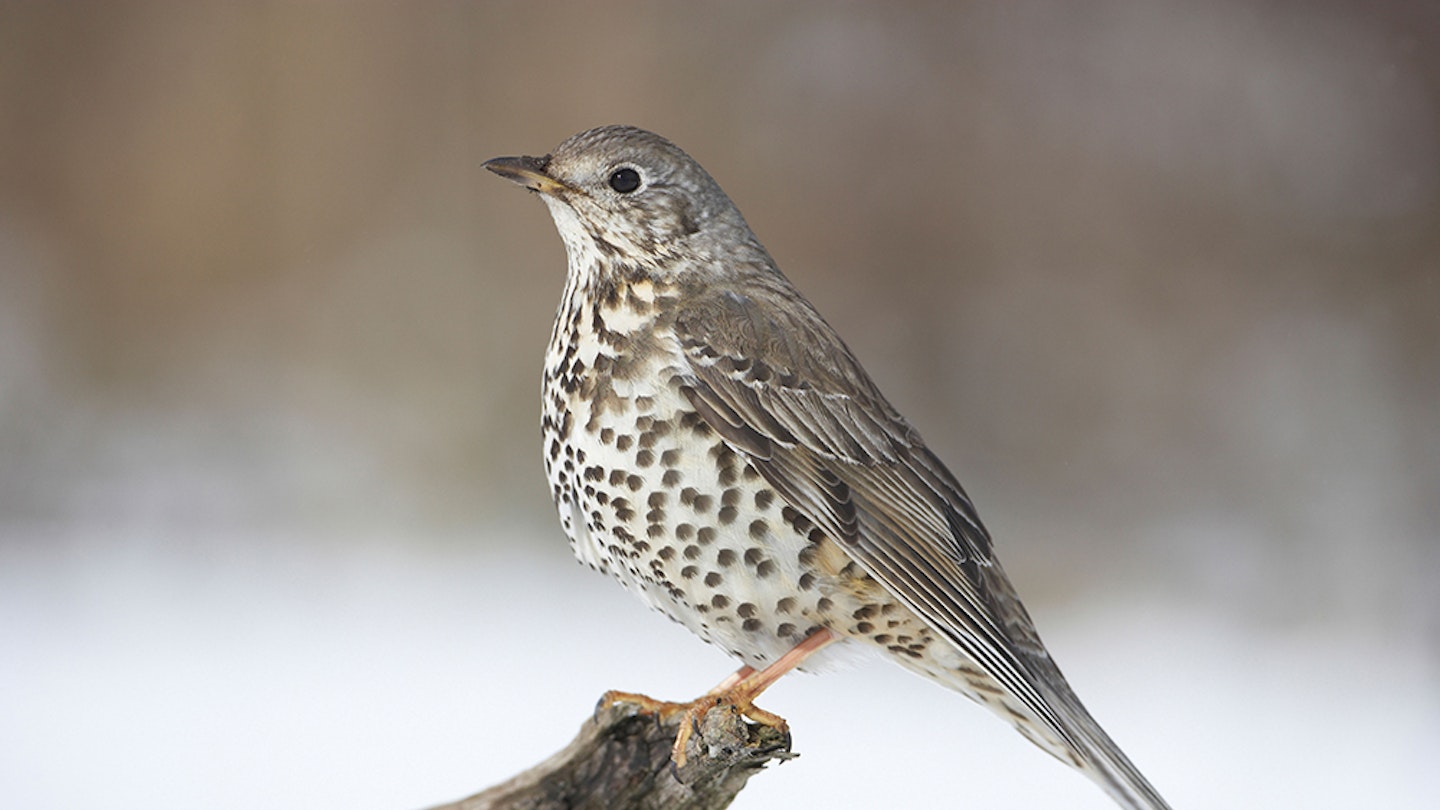Mistle Thrush
The large and handsome Mistle Thrush is the least numerous of our regular wintering thrushes, comfortably outnumbered by the wintering hordes of Redwings and Fieldfares from the continent. With more than 30,000 individuals, it is hardly scarce, though. You may be lucky enough to hear the haunting, melancholy song of the Storm Cock, this month, despite it being the heart of winter. Delivered from the top of a tall tree, it sounds like a Blackbird has been taking lessons in the Blues, and has boiled the song down to the essentials (sounding stereotyped and brief in phrase from a distance, more subtle and complex close up).

Robin
Everyone knows what a Robin looks like. It is often one of the first birds encountered on New Year’s Day, as birds rise early to get in some angry ‘tick’ calls or the first song of the day. Robins are unusual in that both the males and the females sing a full song, defending their own individual territories through the winter. The song consists of ever-changing exquisite and complex phrases in a sibilant liquid silver tone.

Stock Dove
The generally ignored Stock Dove is handsome bird of the countryside: open farmland and woodland alike. Similar to a Feral Pigeon (Rock Dove) in size, but a Woodpigeon in colour (though lacking the white patches on the neck and wings), it has a subtle beauty all of its own. Check out the two-toned grey of the wing in flight (wrapped with a black edge) or, up close simply admire the glorious iridescent colours of the neck patch. In some areas, you can encounter flocks of 100s of Stock Doves, yet they still go unnoticed!

Treecreeper
There are about 200,000 breeding pairs of Treecreeper in the UK. But unless you have good hearing (especially in the high-pitched range), you may think they are pretty uncommon birds. They are remarkably vocal for birds which seem so cryptic and difficult to see (just ask anyone who can hear the high-pitched, slowly repeated ‘reeeee reeeee reeeee’ call). Always a pleasure on the eye, Treecreepers spiral round trunks and and branches, probing as they go, before dropping down to the next tree and repeating the whole procedure. Famously, they are often compared to a creeping mouse, and this is true: if it is a flying mouse that has a long, down curved bill, stiff prop of a tail and spirals around tree trunks…

Marsh Tit
A bird in steep decline, population-wise (like its close relative, the Willow Tit), the Marsh Tit is a bird of selected woodland with a decent amount of undergrowth. The best way to identify Marsh tits (and to find them in the first place) is through the distinctive ‘pi-TCHOO’ call, often followed by a rapid ‘chickadee-dee-dee’. It is a little smaller than a Great Tit, and essentially brown and buff with white cheeks and a black crown and small black bib.
